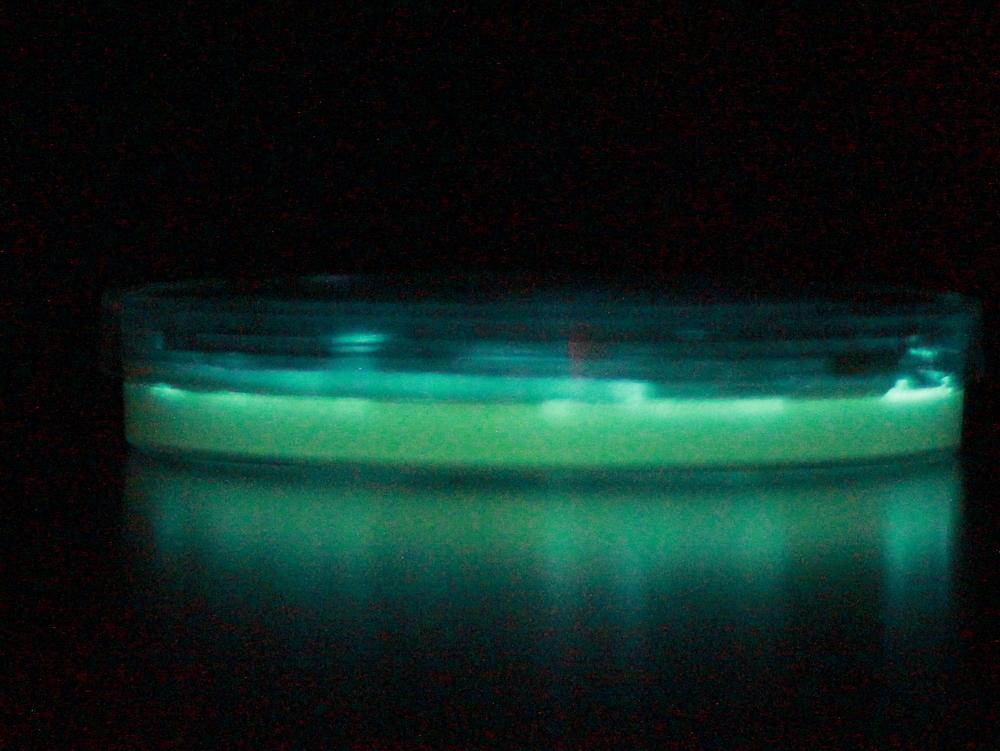Team:Cambridge/Bioluminescence/Bacterial Luciferases
From 2010.igem.org

Project Vibrio: Introduction
Project Vibrio was designed to complement Project Firefly, by using bacterial lux operons to do what had been impossible with firefly luciferases:
- Emission of blue light to complete our spectrum of emission wavelengths.
- Substrate production within E. coli, avoiding the need for addition of external substrates, such as luciferin.
Lux operons are found in the genomes of a range of natural bioluminescent bacteria. Such lux systems contain five genes involved in the generation of light. luxA and luxB form the luciferase of the system, they emit light using the substrate tetradecanal. luxC, luxD and luxE are involved in the biosynthesis of tetradecanal from readily available substrates.
Our work
We cloned the lux operon from the bacterium Vibrio fischeri, which
- Vibrio fischeri, which forms a symbiosis with squid allowing the squid to hunt in moonlit nights without casting a shadow. Due to this their lux proteins are non-functional above 30 degrees
 "
"
